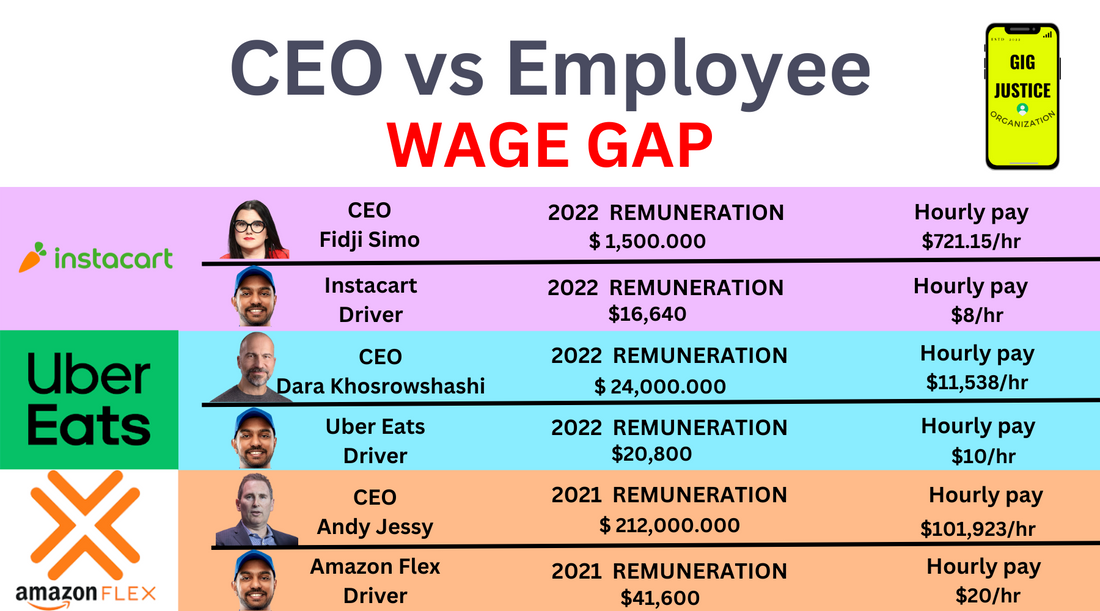The war on Gig Workers

The Disparity Deepens: Profits Soar for Delivery Apps While American Workers Struggle.
by Marta Cattaneo
In the era of booming technology and widespread access to convenient services, the success stories of delivery apps like DoorDash, UberEats, and Instacart seem pervasive. However, beneath the sheen of Initial Public Offerings (IPOs) and soaring profits, a stark and troubling reality persists: the American workforce, despite working tirelessly, grapples with economic insecurity.
Recent studies underscore this disconcerting truth, revealing that almost half of U.S. adults remain unable to cover an emergency expense of $400. As the cost of living continues to rise, the average worker faces financial instability, putting them at risk during unforeseen expenses.
Simultaneously, the wealth of Wall Street magnates, particularly those in the tech and delivery app sector, continues to skyrocket. CEOs, the figureheads of these lucrative companies, earn salaries that are staggering multiples of their employees' earnings. The wealth gap is stark, with CEOs earning as much as 271 times more than the workers who fuel their companies' success.
Amidst these widening economic disparities, delivery apps perpetuate a concerning trend of labor exploitation. Despite IPOs and profitable quarters, these companies often underpay and violate labor laws to avoid treating their drivers as employees, leaving these essential workers without the benefits and protections they deserve.
Consider the DoorDash IPO in December 2020—a financial milestone for the company. However, even as the company celebrated its success on Wall Street, reports indicated that its drivers continued to face issues related to low pay and job security.
Similar stories emerge from UberEats, where drivers, along with other gig workers, have organized protests against unfair wages and working conditions. These protests underline the ongoing struggles faced by workers despite the company's success.
In essence, while CEOs of these delivery giants amass fortunes, the workforce supporting their companies faces significant challenges. The discrepancy in earnings between top executives and the workforce is not merely a byproduct but an integral aspect of a system prioritizing wealth accumulation for the few at the expense of the many.
Wall Street's focus on profitability has resulted in a disregard for the value of work. CEOs are evaluated based on their companies' quarterly stock performance and are compensated largely with company shares. However, Main Street investors and workers only make a profit if the company's long-term prospects look good, and they aren't in the business of speculative trading based on day-to-day stock market fluctuations.
As we celebrate the success of delivery apps on Wall Street, it is crucial to recognize the hidden costs borne by the workforce. The widening wealth gap and labor exploitation are not mere side effects but integral components of a system that prioritizes the accumulation of wealth for the few at the expense of the many. It's time to address these disparities and advocate for fair compensation and labor rights for the backbone of these successful enterprises—the hardworking drivers.
No comments



0 comments